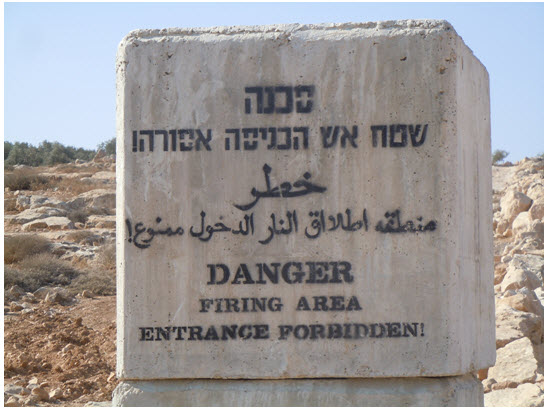For over a decade, the residents of twelve uniquely traditional Palestinian villages in the area of Masafer-Yatta in the south Hebron hills have lived under the constant threat of demolition, evacuation, and dispossession. Israel’s army has declared the area in which they live a “Firing Zone” and in 1999 issued evacuation orders to remove the inhabitants of the villages, claiming that they are not permanent residents, while totally ignoring their ancient culture of cultivation and husbandry.
The evacuation was halted by an interim injunction issued by Israel’s Supreme Court in 2000, in response to two petitions filed by the Association for Civil Rights in Israel (ACRI) and Attorney Shlomo Lecker. Since 2005, after repeated attempts to settle the case led to dead ends, the State Attorney filed continuous requests for extensions over the course of seven years, leaving the petitions pending and the interim injunction in force.
In 2012, after years of stagnation, a preliminary hearing was set, ahead of which the State Attorney announced that the Minister of Defense had formulated his position on the matter. In July 2012 the state announced that, in accordance with the position of the Minister of Defense, the active firing zone would be slightly scaled back, meaning that four of the twelve villages will be able to remain where they are, with the remainder slated for evacuation.
In response to the state’s announcement, the Supreme Court decided to dismiss the old petitions and permit the petitioners to file new ones. In January 2013, ACRI filed a renewed petition against the forcible removal of approximately one thousand residents from the area, the destruction of eight villages, and the eradication of a remarkable way of life that has endured for centuries.
According to information prepared by the ACRI together with Rabbis for Human Rights and with Breaking the Silence “the area designated by the Israeli army as ‘Firing Zone 918’ is located in the south Hebron hills near the town of Yatta. Extending over an area of 30,000 dunams [3,000 hectares; approximately 2,471 acres], it includes twelve Palestinian villages, or hamlets: Jinba, Al-Mirkez, Al- Halaweh, Halat a-Dab’a, Al-Fakheit, A-Tabban, Al- Majaz, A-Sfai Megheir Al-Abeid, Al-Mufaqara, A-Tuba, and Sarura, the last of which is currently unpopulated.” Research conducted by the human rights organization B’Tselem in cooperation with ACRI shows that today there are approx.1,300 people living in the area.
The residents of the villages maintain a unique way of life, with many living in or beside caves, and relying on farming and husbandry of sheep and goats for their livelihood. Most of them were born and raised in these villages to families that have been living in the area for several decades – long before 1967. The historical existence of the hamlets is well documented, including, among other places, in research endorsed by the Israeli Ministry of Defense. In August and November 1999 the majority of inhabitants of the twelve hamlets were served with evacuation orders contending their “illegal dwelling in a fire zone.” On November 16, 1999, security forces forcibly removed over 700 residents from the area. The Israeli army destroyed homes and cisterns and confiscated property. The villagers, dispossessed of their lands and their livelihoods, were left homeless.
Related:



